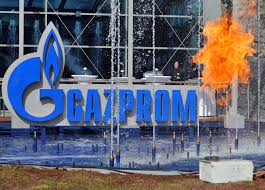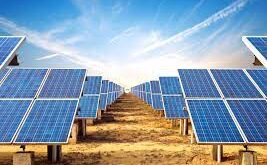Soaring natural gas prices in European markets could be seen as a boon for Russian giant Gazprom to increase its gas exports towards the Old Continent. But instead, somewhat surprising, Gazprom is adopting the exact opposite strategy, drastically reducing its physical deliveries of natural gas to the EU.
Since the end of December 2020, Gazprom gas volumes transiting through Ukraine have fallen by a third to 130 mcbm per day according to CEO of Ukrainian TSO Sergey Makogon, cited by TASS news agency. Hence, spot prices at the Central European Gas Hub (CEGH) in Austria – where Russian gas is traded after flowing through Ukraine and Slovakia – have surged during the past weeks, hitting a record 19,4 euros / MWh (or US$ 6,8 / mmbtu) on January 20th.
This ascending trend is firstly due to higher demand for gas as a direct result of the current winter weather in large parts of Europe. But it is also the result of the coal and nuclear phase-out in the long run. In fact, successive closures of thermal power plants across Europe, such as the French Fessenheim nuclear plant and several German coal and lignite plants, left a 5 GW capacity gap to be filled by gas.
An additional factor driving up these prices is Gazprom holding back its gas supplies. Indeed, to further reduce gas availability and maintain high prices, Gazprom also stopped selling gas through its online “Electronic Sales” platform, Russian media Kommersant reported on January 21st.
Theoretically, Europe could breach that gap by buying additional volumes of Liquified Natural Gas – a strategy that had already proved its efficiency in 2018. But in practice, this option is not viable since most LNG carriers are currently heading towards Asian markets, where the demand (and consequently spot prices for natural gas) have peaked to $21 / mmBtu for February deliveries. However, these attractive prices on Asian markets are nothing but an ephemeral phenomenon: March contracts are already traded at $12 / mmBtu. As soon as the situation stabilizes, LNG cargoes will return to Europe, challenging Gazprom’s dominance: LNG prices are becoming increasingly competitive with pipeline gas, while simultaneously serving the goal of European supply diversification.
For the time being, European countries have no other choice than taking gas from their underground gas storage sites (UGS). But even these reserves are gradually depleting, questioning the EU’s availability of gas in a season where the demand is particularly high. Latest AGSI data shows that these reserves stood at 59% of full capacity on January 21st.
The rate of depletion of these reserves can appear worrying, considering that they were 73% full in December 2020. Gas analyst Serguei Kapitonov, cited by OSN media, argues that these reserves are expected to be sufficient for 70 more days. This situation looks like a deja-vu, reminding us of the winter 2018 when Europe got to spring with almost empty storage sites : their average level was 20% in March.
The reasons behind Gazprom’s stance are, in fact, fairly pragmatic. According to energy experts cited by Kommersant. The strategy aims at rationalizing its supply and avoiding an excess of natural gas on the markets, which pushes up prices. The Russian gas giant is having a long-term vision, hoping that the prices will remain high when the time comes to refill European storage facilities. This would prevent a situation as we saw during the Spring of 2020, when prices reached record-lows and even negative levels, leading to major losses for Gazprom.
Back then, Gazprom had ensured to fill gas storage sites in Europe in case negotiations on a new transit agreement would not be successfully concluded with Ukraine’s Naftogaz. Saying that everything did not go as planned would be a euphemism: not only did Ukraine eventually sign the transit agreement, but the pandemic also provoked a drop in gas demand. These reasons, combined with a mild 2020 winter in Europe, have contributed to lower Russian gas exports, and Gazprom closed the year with a contraction of its deliveries to Europe, which have dropped to 170 bcm from 199 bcm in 2019.
Another possible explanation to Gazprom reducing its exports is its willingness to show the indispensable character of the Nord Stream 2 pipeline and encourage European countries to rapidly finish the works. In fact, Gazprom’s move also comes as political pressure against the Nord Stream 2 project intensifies: the United States announced sanctions against the pipe-laying ship Fortuna, several Western companies involved in the construction withdrew from the project, and recently the arrest of Russian opposition leader Alexei Navalny cast doubt on the continuation of the works.
According to initial plans, Gazprom expected the Nord Stream 2 pipeline to to come on stream by 2021. The megaproject is aimed at double Russian export capacity to Europe, avoiding the transit process through Ukraine by creating a parallel route to the existing Nord Stream pipeline. While more than 90% of the pipeline is already built, Gazprom recently admitted, for the first time, that sanctions have a serious impact on the NordStream 2 project.

 Iran Energy News Oil, Gas, Petrochemical and Energy Field Specialized Channel
Iran Energy News Oil, Gas, Petrochemical and Energy Field Specialized Channel



